Cover Page
Title Page
Copyright Page
Dedication
About the Author
BRIEF CONTENTS
Table of Content
Preface
Chapter 1 Magnetic Circuits and Magnetic Materials
1.1 Introduction to Magnetic Circuits
1.2 Flux Linkage, Inductance, and Energy
1.3 Properties of Magnetic Materials
1.4 AC Excitation
1.5 Permanent Magnets
1.6 Application of Permanent-MagnetMaterials
1.7 Summary
1.8 Chapter 1 Variables
1.9 Problems
Chapter 2 Transformers
2.1 Introduction to Transformers
2.2 No-Load Conditions
2.3 Effect of Secondary Current; Ideal Transformer
2.4 Transformer Reactances and Equivalent Circuits
2.5 Engineering Aspects of Transformer Analysis
2.6 Autotransformers; Multiwinding Transformers
2.7 Transformers in Three-Phase Circuits
2.8 Voltage and Current Transformers
2.9 The Per-Unit System
2.10 Summary
2.11 Chapter 2 Variables
2.12 Problems
Chapter 3 Electromechanical-Energy-Conversion Principles
3.1 Forces and Torques in Magnetic-Field Systems
3.2 Energy Balance and the Energy Method
3.3 Energy in Singly Excited Magnetic-Field Systems
3.4 Determination of Magnetic Force and Torque from Energy
3.5 Determination of Magnetic Force and Torque from Coenergy
3.6 Multiply Excited Magnetic-Field Systems
3.7 Forces and Torques in Systems with Permanent Magnets
3.8 Dynamic Equations
3.9 Analytical Techniques
3.10 Summary
3.11 Chapter 3 Variables
3.12 Problems
Chapter 4 Introduction to Rotating Machines
4.1 Elementary Concepts
4.2 Introduction to AC and DC Machines
4.3 MMF of Distributed Windings
4.4 Magnetic Fields in Rotating Machinery
4.5 Rotating MMF Waves in AC Machines
4.6 Generated Voltage
4.7 Torque in Non-Salient-Pole Machines
4.8 Linear Machines
4.9 Magnetic Saturation
4.10 Leakage Flux
4.11 Summary
4.12 Chapter 4 Variables
4.13 Problems
Chapter 5 Synchronous Machines
5.1 Introduction to Polyphase Synchronous Machines
5.2 Synchronous-Machine Inductances; Equivalent Circuits
5.3 Open- and Short-Circuit Characteristics
5.4 Steady-State Power-Angle Characteristics
5.5 Steady-State Operating Characteristics
5.6 Effects of Salient Poles; Introduction to Direct-and Quadrature-Axis Theory
5.7 Power-Angle Characteristics of Salient-Pole Machines
5.8 Permanent-Magnet AC Machines
5.9 Summary
5.10 Chapter 5 Variables
5.11 Problems
Chapter 6 Polyphase Induction Machines
6.1 Introduction to Polyphase Induction Machines
6.2 Currents and Fluxes in Polyphase Induction Machines
6.3 Induction-Motor Equivalent Circuit
6.4 Analysis of the Equivalent Circuit
6.5 Torque and Power by Use of Thevenin’s Theorem
6.6 Parameter Determination from No-Load and Blocked-Rotor Tests
6.7 Effects of Rotor Resistance; Wound and Double-Squirrel-Cage Rotors
6.8 Summary
6.9 Chapter 6 Variables
6.10 Problems
Chapter 7 DC Machines
7.1 Introduction
7.2 Commutator Action
7.3 Analytical Fundamentals: Electric-Circuit Aspects
7.4 Effect of Armature MMF
7.5 Analytical Fundamentals: Magnetic-Circuit Aspects
7.6 Steady-State DC Machine Performance
7.7 Permanent-Magnet DC Machines
7.8 Commutation and Interpoles
7.9 Compensating Windings
7.10 Series Universal Motors
7.11 Summary
7.12 Chapter 7 Variables
7.13 Problems
Chapter 8 Variable-Reluctance Machines and Stepping Motors
8.1 Basics of VRM Analysis
8.2 Practical VRM Configurations
8.3 CurrentWaveforms for Torque Production
8.4 Nonlinear Analysis
8.5 Stepping Motors
8.6 Summary
8.7 Chapter 8 Variables
8.8 Problems
Chapter 9 Single-and Two-Phase Motors
9.1 Single-Phase Induction Motors: Qualitative Examination
9.2 Starting and Running Performance of Single-Phase Induction and Synchronous Motors
9.3 Revolving-Field Theory of Single-Phase Induction Motors
9.4 Two-Phase Induction Motors
9.5 Summary
9.6 Chapter 9 Variables
9.7 Problems
Chapter 10 Speed and Torque Control
10.1 Control of DC Motors
10.2 Control of Synchronous Motors
10.3 Control of Induction Motors
10.4 Control of Variable-Reluctance Motors
10.5 Summary
10.6 Chapter 10 Variables
10.7 References
10.8 Problems
Appendix A Three-Phase Circuits
A.1 Generation of Three-Phase Voltages
A.2 Three-Phase Voltages, Currents, and Power
A.3 Y- and �-Connected Circuits
A.4 Analysis of Balanced Three-Phase Circuits; Single-Line Diagrams
A.5 Appendix A Variables
Appendix B Voltages, Magnetic Fields, and Inductances of Distributed AC Windings
B.1 Generated Voltages
B.2 Armature MMF Waves
B.3 Air-Gap Inductances of Distributed Windings
B.4 Appendix B Variables
Appendix C The dq0 Transformation
C.1 Transformation to Direct- and Quadrature-Axis Variables
C.2 Basic Synchronous-Machine Relations in dq0 Variables
C.3 Basic Induction-Machine Relations in dq0 Variables
C.4 Appendix C Variables
Appendix D Engineering Aspects of Practical Electric Machine Performance and Operation
D.1 Losses
D.2 Rating and Heating
D.3 Cooling Means for Electric Machines
D.4 Excitation
D.5 Energy Efficiency of Electric Machinery
Appendix E Table of Constants and Conversion Factors for SI Units
Index
Back Cover
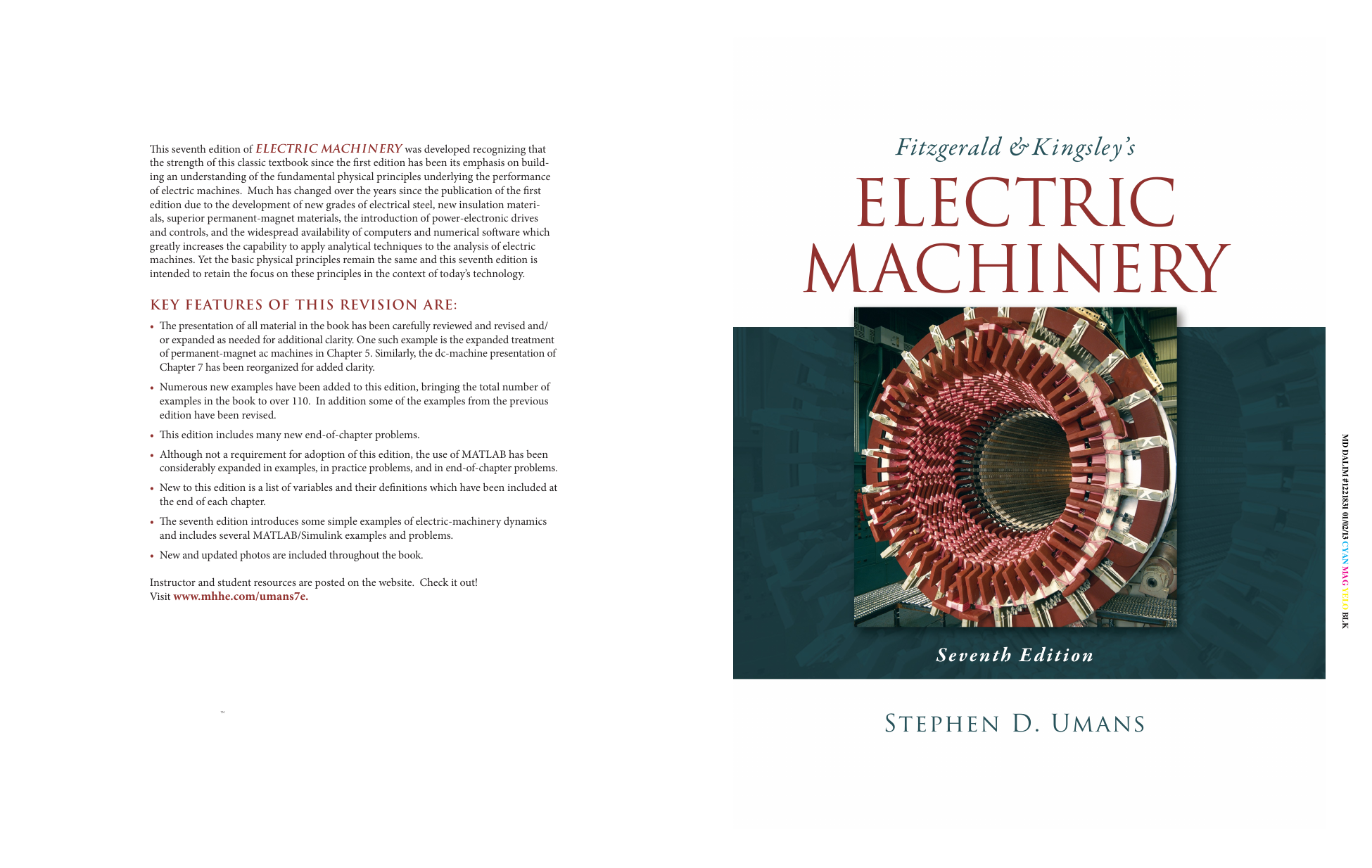
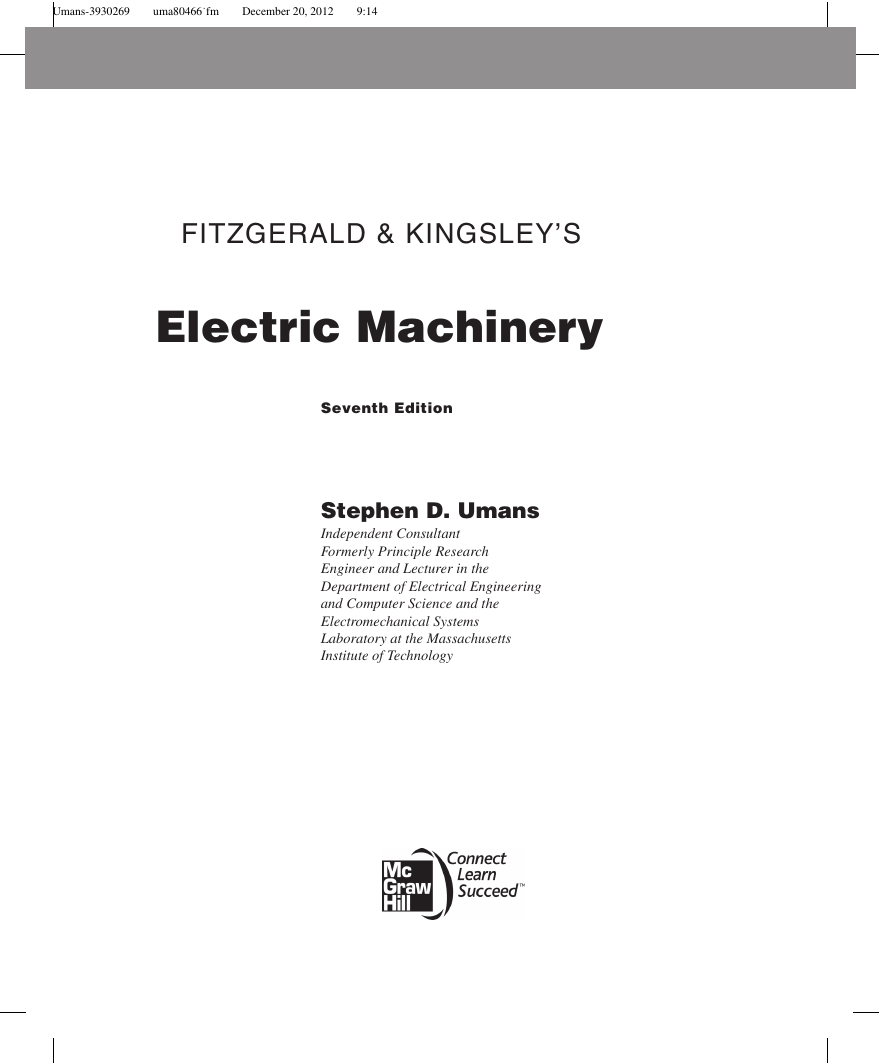
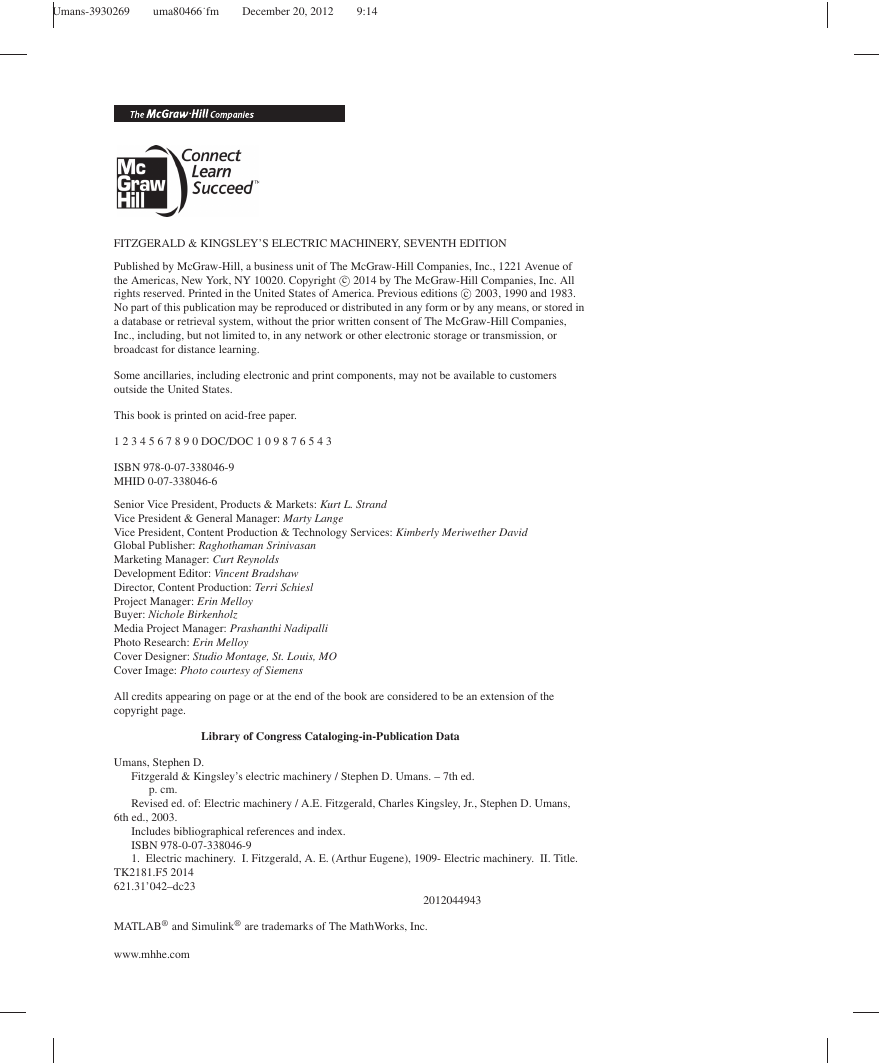

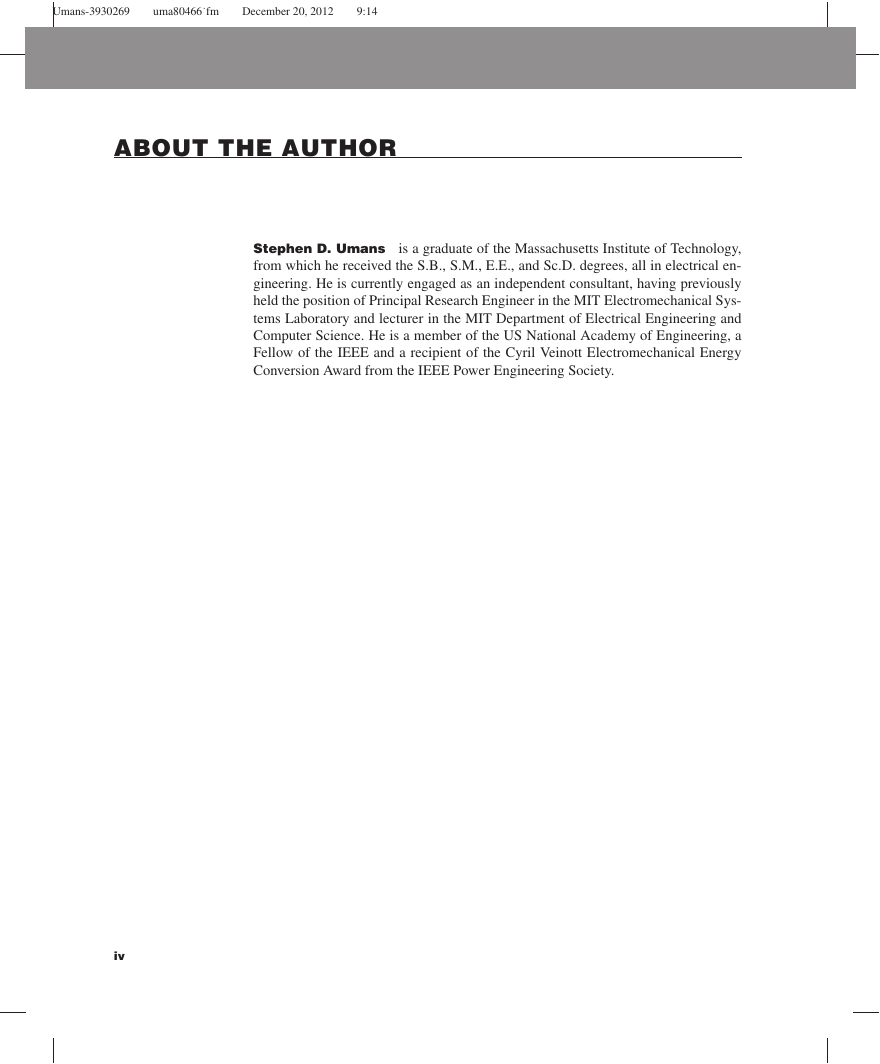

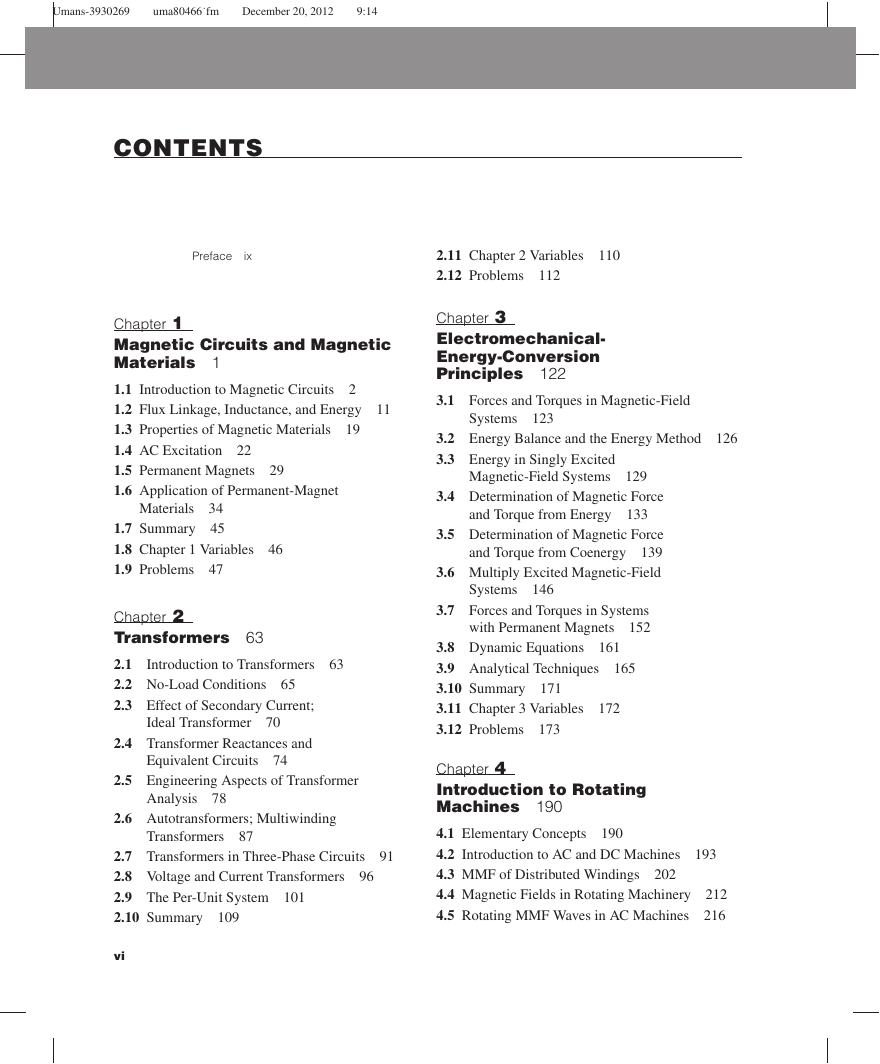









 2023年江西萍乡中考道德与法治真题及答案.doc
2023年江西萍乡中考道德与法治真题及答案.doc 2012年重庆南川中考生物真题及答案.doc
2012年重庆南川中考生物真题及答案.doc 2013年江西师范大学地理学综合及文艺理论基础考研真题.doc
2013年江西师范大学地理学综合及文艺理论基础考研真题.doc 2020年四川甘孜小升初语文真题及答案I卷.doc
2020年四川甘孜小升初语文真题及答案I卷.doc 2020年注册岩土工程师专业基础考试真题及答案.doc
2020年注册岩土工程师专业基础考试真题及答案.doc 2023-2024学年福建省厦门市九年级上学期数学月考试题及答案.doc
2023-2024学年福建省厦门市九年级上学期数学月考试题及答案.doc 2021-2022学年辽宁省沈阳市大东区九年级上学期语文期末试题及答案.doc
2021-2022学年辽宁省沈阳市大东区九年级上学期语文期末试题及答案.doc 2022-2023学年北京东城区初三第一学期物理期末试卷及答案.doc
2022-2023学年北京东城区初三第一学期物理期末试卷及答案.doc 2018上半年江西教师资格初中地理学科知识与教学能力真题及答案.doc
2018上半年江西教师资格初中地理学科知识与教学能力真题及答案.doc 2012年河北国家公务员申论考试真题及答案-省级.doc
2012年河北国家公务员申论考试真题及答案-省级.doc 2020-2021学年江苏省扬州市江都区邵樊片九年级上学期数学第一次质量检测试题及答案.doc
2020-2021学年江苏省扬州市江都区邵樊片九年级上学期数学第一次质量检测试题及答案.doc 2022下半年黑龙江教师资格证中学综合素质真题及答案.doc
2022下半年黑龙江教师资格证中学综合素质真题及答案.doc